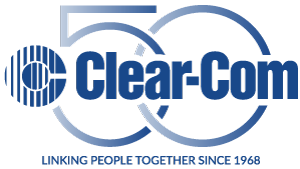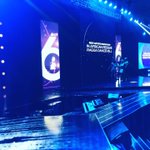The Beginning
The 60’s were a legendary time of youth peacefully taking to the streets in San Francisco. The creativity and energy of the Flower Power movement gave birth to a whole new live performance scene–the context in which Clear-Com was born.
Two East Coast transplants made their way to San Francisco. Charles “Charlie” Butten and Robert “Bob” Cohen planted seeds in those tumultuous times and became prominent contributors to a burgeoning counter-cultural movement which reached its peak in The Summer of Love. Each contributed in fascinating ways – Charlie was busy fixing and improving the guitar amps that Lindsey Buckingham would destroy in his pre-Fleetwood Mac days. Bob was busy mixing sound at The Avalon Ballroom as half owner of Family Dog Productions, alongside the legendary Chet Helms.
The early days at the Avalon were full of great music, never to forget experiences with incredible sounds from the likes of The Grateful Dead, Jefferson Airplane, The Doors, and Janis Joplin, greatly enhanced production values including lights and costumes, and incredibly high noise levels. This new kind of concert volume levels could (and did in time) cause eardrum damage, not to mention making it near impossible to hear cues and instructions to follow spots and stage personnel.
Charlie came to know Bob in this mix of music and high sound pressure level (SPL) through his connection with the San Francisco bands. It was at this moment in history when Bob turned to Charlie with a plea from the bands and his own needs at the Avalon: “We need a better way to communicate”. Until now, Bob and his production staff had been using telephone type ‘Ma Bell’ headsets for communications, but they couldn’t stand up to the challenging conditions and were useless in high noise settings.
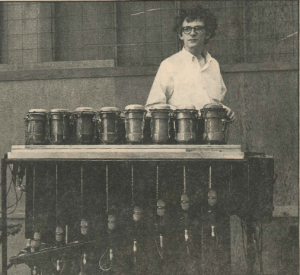
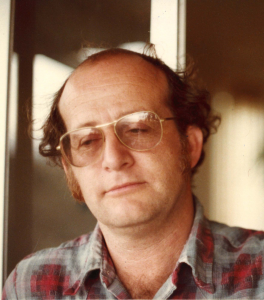
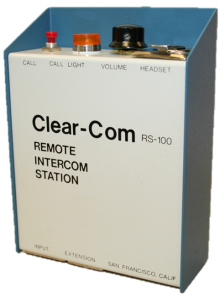
The First Distributed Amplifier Beltpack Intercom System
Based on his exceptional knowledge of analog audio technology from his work with local bands, Charlie worked closely with Bob, whose understanding of concert workflow was hard earned, to fashion together the first distributed amplifier intercom system, aka “partyline intercom system” using now familiar ‘beltpacks’ powered by a ‘main station’. The RS-100 analog single-channel beltpack has since become emblematic as the key invention at Clear-Com’s foundation.
This was the first invention of its kind for live production use: a portable intercom station worn at the hip, carrying audio and power over a shielded microphone cable. It featured non-blocking full-duplex audio signal flow; sidetone so you could hear your own voice alongside other talkers in your headset/speaker; line impedance at 200 Ohm; and a headset jack for users to connect into the beltpack. The system offered a unique contour frequency response and wide dynamic range to ensure ultra-low distortion, known today as the “Clear-Com Sound,” which delivers superb intelligibility in high-noise environments.
The first beltpack of its kind, it was truly a revolutionary breakthrough in clear communications. An invention Charlie aptly named “Clear-Com”.
Clear-Com was incorporated on April 18, 1968 and moved into its first office in San Francisco.
50 Years of Intercom Innovations
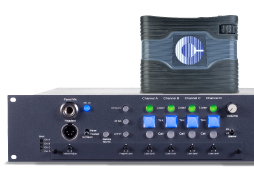
Partyline Intercom
Since that time in 1968, the analog intercom family has remained an important part of the Clear-Com business. Starting with the RS-100 beltpack and the CS-100 (aka ‘the shoebox’), the line expanded to include a complete mix of Main Stations that can support up to 100 remote stations, Remote Station options in rackmount or wall-mount versions; Interfaces for linking Clear-Com with other types or brands of communications systems, as well as a full range of wired beltpacks and headsets for different user demands.
After close to a decade of success in the live performance market, word spread quickly internationally and into adjacent industries. These market forces drove the company into innovating larger and more flexible systems such as the fully-programmable MS-808 with greater channel count, more separate intercom channels, IFB capabilities, interfacing with third-party equipment such as cameras, telephone lines, and two-way radios. Today, Clear-Com is considered the de facto industry standard in analog partyline technology.

Digital Matrix Intercom
Eventually, more complex workflows like those in Broadcast required even more flexible platforms and tighter integration with digital systems that were in use. In the early 1980s, Clear-Com introduced its first digital intercom system, Matrix Plus, to address the needs of more demanding television operations and the first three generations of digital matrix technology were a market favorite. In 1997, it’s success in the market caught the attention of the UK-based holding company, The Vitec Group, who not only acquired Clear-Com but also several other companies serving the Broadcast industry. In 1998 Vitec also bought Clear-Com’s UK-based competitor, Drake Electronics. Both companies continued to serve the Broadcast market simultaneously as separate entities while the R&D teams came together to develop what became the Eclipse Digital Matrix, which was then released by a now-combined company with the Clear-Com brand in the forefront.
Subsequently Clear-Com introduced the Eclipse HX Digital Matrix Platform with a much faster processing speed and expanded capability set. Eclipse HX is unmatched in the industry in terms of integrating with other IP, wireless, digital and analog Clear-Com-branded intercom families as well as tightly integrating third-party systems using its Host Control Interface (HCI) layer to control those systems. Another, uniquely powerful management tool in the Eclipse HX platform is Dynam-EC which allows operators unprecedented flexibility and control of their systems in a graphical workspace.
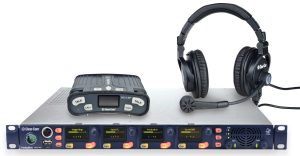
Digital Networked Partyline Intercom
Clear-Com’s technological advancements and innovations over these five decades have delivered significant improvements to the way people collaborate in professional settings where real-time communication matters. Notable amongst these developments are those which balance simplicity in user experience with sophistication in network architecture.
In 2010, Clear-Com brought to market the very first digital network partyline system called HelixNet. It had a robust set of partyline capabilities and digital audio quality that operated over any standard shielded twisted pair cable, but its core technology was an IP platform which also allowed audio channels, program audio and distributed Power-over-Ethernet to run on any standard IT network infrastructure via an Ethernet/LAN cable. HelixNet has subsequently risen to the forefront of high-end live performance applications like major Broadway productions and their touring versions.
Wireless Intercom
While wired intercom systems were still the central systems used for production intercom, many workflows required a few users to be untethered and mobile throughout production areas. Wireless intercom technology became a necessary adjunct component to the wired intercom.
Even as early as the 70s, Clear-Com had some initial collaboration which prefaced our later acquisition by HM Electronics (HME) – Harry Miyahira had founded HME in 1974 with a focus on building wireless microphones and quickly identified a parallel opportunity in wireless intercom. Clear-Com seeing the obvious opportunities there collaborated with HME as well as their competitor Vega Communications to offer wireless solutions as part of their intercom offering, later acquiring part of Vega in an acquisition.
For many years, Clear-Com’s wireless intercom portfolio was composed of a number of OEM-provided solutions but the breakthrough in wireless innovation was the first FreeSpeak/CellCom DECT systems. FreeSpeak/CellCom was the very first system of its kind capable of supporting a high number of simultaneous wireless full duplex users in a license-free multi-area configurations. The system was available as either an integrated wireless solution with the Eclipse Matrix or standalone system operating on the base station. It was a truly groundbreaking innovation.
Meanwhile, HME had developed an exceptional complement to its beloved UHF workhorses the System 800 and Pro 850. The DX 2.4GHz digital wireless family wireless quickly developed into an industry standard for lower-level technical requirements where a simplified workflow and extreme ruggedness were a driver.
When HME acquired Clear-Com in 2010, HME’s complete portfolio of wireless intercom became available through Clear-Com, completing their offering in significant ways.
In 2014 Clear-Com redesigned the first generation FreeSpeak/CellCom system and introduced the 2.4GHz and 1.9GHz DECT based FreeSpeak II product. This was a significant improvement in terms of RF operation, sound quality and user capability and has come to be recognized by audio professionals around the world at the standard in mid- to- large scale wireless deployments. The audio improvements in the DX410 product have enabled it to achieve a similar status for smaller scale applications with fewer groups and users.
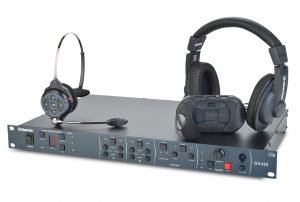
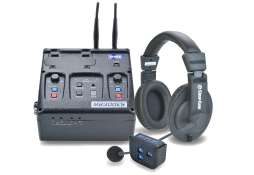

IP Communications
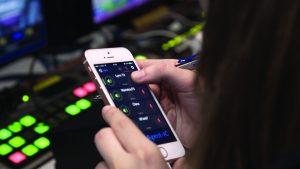 Starting with VoICE in 2005, Clear-Com began to bring production intercom into IP-based operations, allowing for users to connect communication paths over commonly available networks or even the public internet. In 2008, Clear-Com acquired Montreal-based TalkDynamics and leveraged its powerful I.V. Core technology across a range of products, including an updated VoICE2 which simplified intercom panel and audio communications over IP. From the standalone software-based Concert application, to critical components of the Eclipse HX product range, through to our award-winning LQ connectivity family and Agent-IC mobile application, IP has become an integral part of how our intercom vision is borne out. These developments are no longer a specialist activity, they are part of myriad client activities all over the world every day.
Starting with VoICE in 2005, Clear-Com began to bring production intercom into IP-based operations, allowing for users to connect communication paths over commonly available networks or even the public internet. In 2008, Clear-Com acquired Montreal-based TalkDynamics and leveraged its powerful I.V. Core technology across a range of products, including an updated VoICE2 which simplified intercom panel and audio communications over IP. From the standalone software-based Concert application, to critical components of the Eclipse HX product range, through to our award-winning LQ connectivity family and Agent-IC mobile application, IP has become an integral part of how our intercom vision is borne out. These developments are no longer a specialist activity, they are part of myriad client activities all over the world every day.
Signal Transport & Interoperability
As mentioned above, connecting multiple communication systems has been a focus for Clear-Com for many years, almost back to the very beginning of the business. Connecting to phone lines and two-way radios, as well as overhead announcements and program audio are foundational to our business. Over time a variety of other interfaces at various levels of sophistication, including recent developments like SIP (for telephones and radios), Dante (for high density program audio), radio-over-IP (through our Gateway product), and widely separated traditional intercoms of all brands which we now lead the market in connecting with our LQ product family. Linking intercom and audio together over fiber led to the revolutionary ProGrid line, and subsequent needs to associate intercom connectivity with video transportation brought BroaMan into the Clear-Com offering. The portfolio now includes all kinds of solutions for the transportation and interconnection of all kinds of signals – intercom, control, audio, and video.
Where Communications Matter
Clear-Com has maintained its commitment to the live production world, never losing its roots in this market. Today, Clear-Com is a major player in countless settings where real-time collaboration among teams is critical, even if they are at some distance from our historical core markets of live performance and broadcast. These range from instant replay operations for professional sports; venue communication and opening and closing ceremonies at international events such as The Olympic Games; classified government operations to astronaut training programs. The team takes immense pride that Clear-Com customers make amazing things happen in our lives every day – be it in concert halls, performance arts venues, broadcast stations, sports stadiums, corporate meeting rooms, live events, churches, military operations, aerospace, government programs, medical training facilities, as well as theme parks, offshore-marine, public safety, transportation, etc.
The People of Clear-Com
The Clear-Com of today has formed over the last 50 years. In fact, our employees come from different companies through acquisitions and mergers. Our offices in Cambridge and Montreal are linked to the acquisitions of Drake Electronics and TalkDynamics, respectively. When HME purchased Clear-Com in 2010, our biggest corporate change yet, it had not only expanded our presence in the San Diego area, but also added a world-class manufacturing capability within the company which had been lacking before that time. Most recently in 2016, Clear-Com acquired Trilogy Communications, based in Andover, Hampshire, UK, for its specialized matrix solutions that complement Clear-Com’s digital matrix portfolio. We are a company with exceptional people, at all these locations, who care deeply about what they do every day as part of the effort to bring the best solutions possible to our end users.
These incredible people who are our users – connecting them over hands-free and real-time communications system for doing their jobs with other people on the same mission. They are professionals from all walks of life, working on different projects or assignments, and based where the work takes them. They are also the people of Clear-Com, as they are at the center of our thoughts as we do what we do.
Their work environment and requirements may change often, but one thing that is constant is our dependability – of our products and services. The ability of our systems to work when it matters the most. We put our products through rigorous testing to ensure they work in a variety of different use cases. We offer extensive and ongoing training to new and existing users. Our customer service support is staffed by the best people in the industry, in terms of their skills, knowledge, experience and commitment to customers.
There is another group of people who are pivotal to our ability to serve these users – our Global Network of Channel Partners and Rental Partners. Even from the very beginning, the Clear-Com business has always depended on dealers and distributors to market its products in assigned regions and territories. We offer them access to a large set of highly-demanded intercom brands and support, and in return, they provide us their commitment, time, and local expertise and language. Our extended Partner network and our people worldwide are truly the pillars of Clear-Com, and without them, we would be not the company we are today.
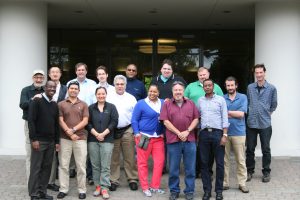
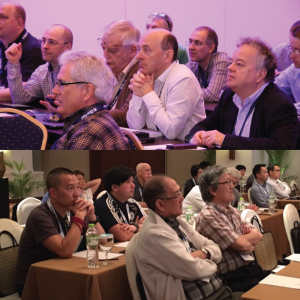
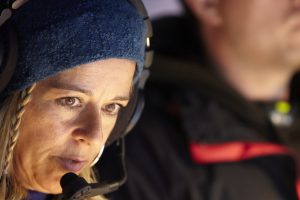
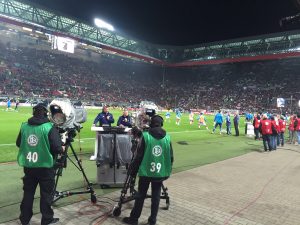
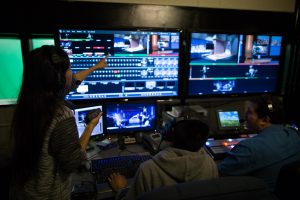

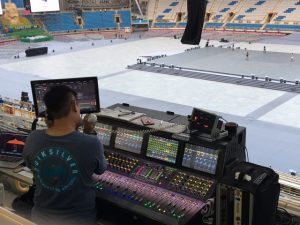
The Future
It is easy to say that the best is yet to come, but in fact looking back over our amazing 50-year history, Clear-Com has reached remarkable milestones that would be difficult to surpass. And yet at Clear-Com, we have such an incredible vision for what we see coming next and how it can empower people to do their jobs that it’s hard not to get caught up in that inspiration. Careful observers of our track record in recent years will see that we’ve released an average of 10 new products or product updates a year over the last five years – and more than all our competitors combined.
